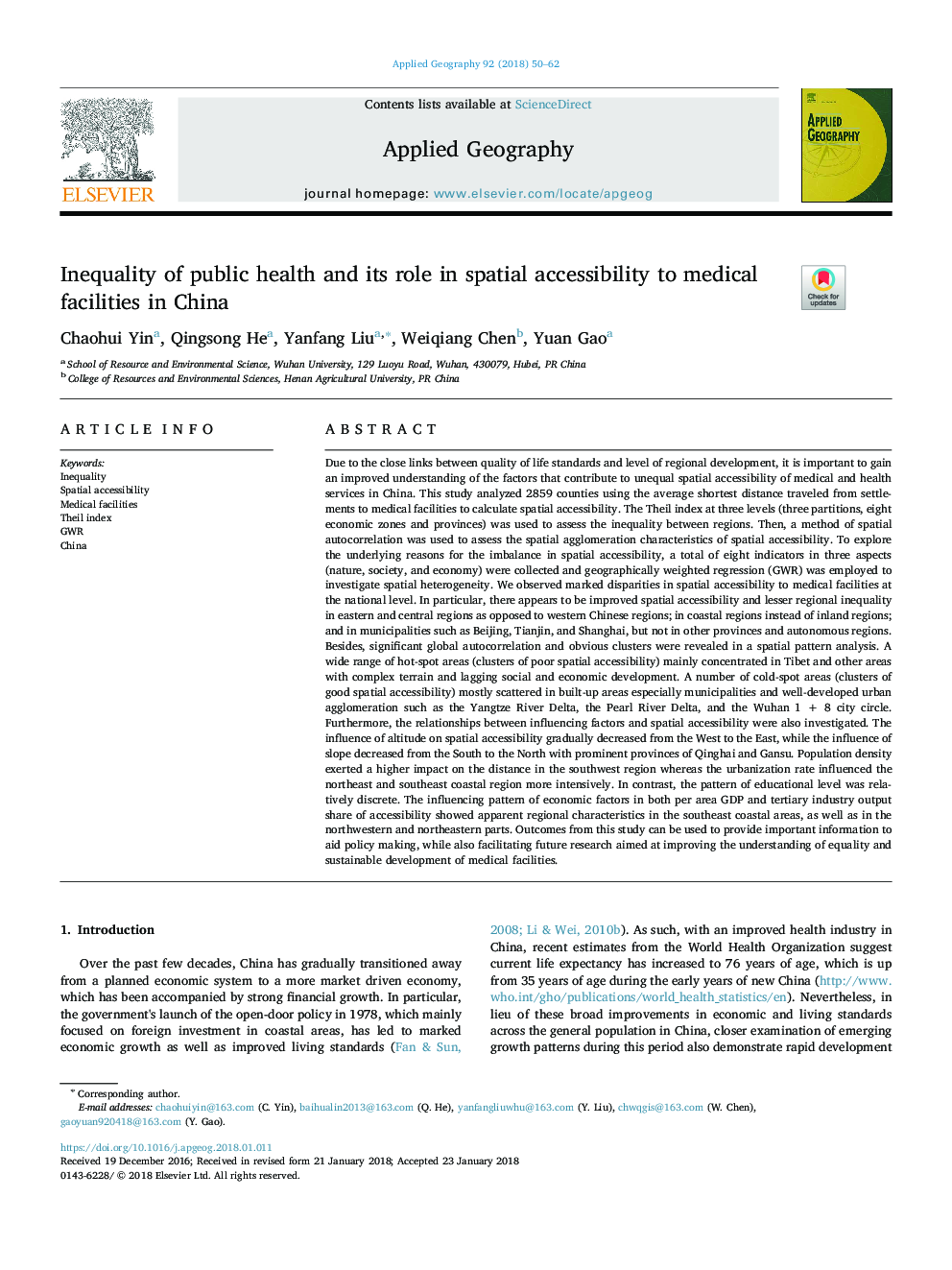| کد مقاله | کد نشریه | سال انتشار | مقاله انگلیسی | نسخه تمام متن |
|---|---|---|---|---|
| 6538312 | 1421025 | 2018 | 13 صفحه PDF | دانلود رایگان |
عنوان انگلیسی مقاله ISI
Inequality of public health and its role in spatial accessibility to medical facilities in China
ترجمه فارسی عنوان
نابرابری سلامت عمومی و نقش آن در دسترسی فضایی به امکانات پزشکی در چین
دانلود مقاله + سفارش ترجمه
دانلود مقاله ISI انگلیسی
رایگان برای ایرانیان
کلمات کلیدی
موضوعات مرتبط
علوم زیستی و بیوفناوری
علوم کشاورزی و بیولوژیک
جنگلداری
چکیده انگلیسی
Due to the close links between quality of life standards and level of regional development, it is important to gain an improved understanding of the factors that contribute to unequal spatial accessibility of medical and health services in China. This study analyzed 2859 counties using the average shortest distance traveled from settlements to medical facilities to calculate spatial accessibility. The Theil index at three levels (three partitions, eight economic zones and provinces) was used to assess the inequality between regions. Then, a method of spatial autocorrelation was used to assess the spatial agglomeration characteristics of spatial accessibility. To explore the underlying reasons for the imbalance in spatial accessibility, a total of eight indicators in three aspects (nature, society, and economy) were collected and geographically weighted regression (GWR) was employed to investigate spatial heterogeneity. We observed marked disparities in spatial accessibility to medical facilities at the national level. In particular, there appears to be improved spatial accessibility and lesser regional inequality in eastern and central regions as opposed to western Chinese regions; in coastal regions instead of inland regions; and in municipalities such as Beijing, Tianjin, and Shanghai, but not in other provinces and autonomous regions. Besides, significant global autocorrelation and obvious clusters were revealed in a spatial pattern analysis. A wide range of hot-spot areas (clusters of poor spatial accessibility) mainly concentrated in Tibet and other areas with complex terrain and lagging social and economic development. A number of cold-spot areas (clusters of good spatial accessibility) mostly scattered in built-up areas especially municipalities and well-developed urban agglomeration such as the Yangtze River Delta, the Pearl River Delta, and the Wuhan 1Â +Â 8 city circle. Furthermore, the relationships between influencing factors and spatial accessibility were also investigated. The influence of altitude on spatial accessibility gradually decreased from the West to the East, while the influence of slope decreased from the South to the North with prominent provinces of Qinghai and Gansu. Population density exerted a higher impact on the distance in the southwest region whereas the urbanization rate influenced the northeast and southeast coastal region more intensively. In contrast, the pattern of educational level was relatively discrete. The influencing pattern of economic factors in both per area GDP and tertiary industry output share of accessibility showed apparent regional characteristics in the southeast coastal areas, as well as in the northwestern and northeastern parts. Outcomes from this study can be used to provide important information to aid policy making, while also facilitating future research aimed at improving the understanding of equality and sustainable development of medical facilities.
ناشر
Database: Elsevier - ScienceDirect (ساینس دایرکت)
Journal: Applied Geography - Volume 92, March 2018, Pages 50-62
Journal: Applied Geography - Volume 92, March 2018, Pages 50-62
نویسندگان
Chaohui Yin, Qingsong He, Yanfang Liu, Weiqiang Chen, Yuan Gao,
